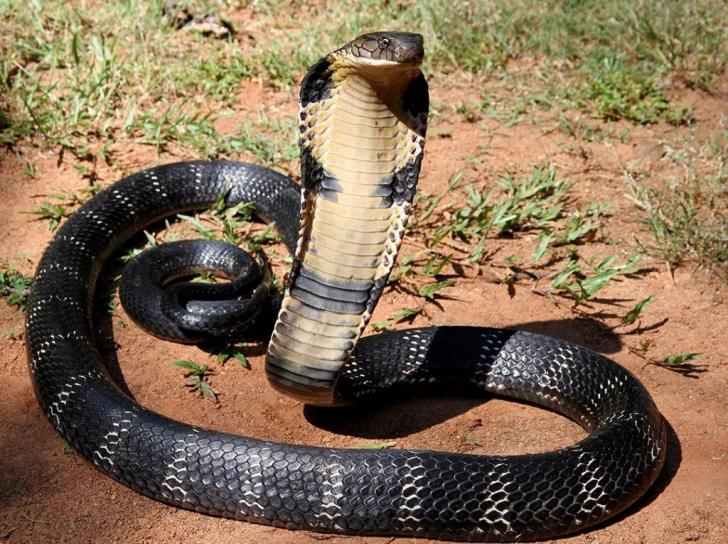News / National
Zimbabwe invents herbal antivenom
06 May 2025 at 07:41hrs |
1 Views

In a potentially life-saving scientific breakthrough, Chinhoyi University of Technology (CUT) has made significant progress in the development of a herbal-based polyvalent antivenom, with promising preliminary results offering hope to reduce Zimbabwe's snakebite fatalities.
The antivenom, developed at the CUT Innovation Hub, differs from conventional serum-based antivenoms that are specific to individual snake species. Instead, CUT's formula is polyvalent-effective against a wide range of snake venoms-and taps into Zimbabwe's traditional medicinal heritage, which has long used indigenous herbs for snakebite treatment.
CUT researchers say the new plant-based antivenom has shown potential to neutralise various types of venom-neurotoxic (affecting the nervous system), haemotoxic (blood and cardiovascular), cytotoxic (damaging cells at the bite site), and myotoxic (damaging muscle tissue).
In addition to treatment, some of the herbs studied have demonstrated prophylactic properties, offering protection before venom exposure-a major breakthrough for people living or working in snake-prone areas such as rural communities, farms, and grazing lands.
CUT lecturer Mr Takura Gozho, who is leading the research, said preliminary results were encouraging. "The research is progressing well. We're developing a polyvalent herbal-based formula that neutralizes different venom effects," he said.
"The current challenge with imported antivenom is that it is serum-based and species-specific. This makes correct administration difficult, especially if the snake type is unknown," Gozho explained. "Our formula reduces the risk of misapplication and expands access to life-saving treatment."
Zimbabwe currently imports antivenom from India, but stock-outs are frequent, creating dangerous gaps in treatment. A recent Ministry of Health and Child Care disease surveillance report recorded over 2,300 snakebites and nine deaths since the beginning of 2025, with over 100 snakebites reported in a single week ending April 13.
Mr Gozho confirmed that experimental trials with animal models have been completed, including in vitro (outside a living organism) and in vivo (inside a living organism) testing. CUT has also begun preliminary engagement with the Medicines Control Authority of Zimbabwe (MCAZ) for approval to begin clinical trials.
CUT Innovation Hub manager Engineer Powell Mlambo expressed optimism about the project's progress. "Research is ongoing and we've recorded some positive breakthroughs. Once we've finalized all legal and regulatory processes, we will be in a position to discuss large-scale production," he said.
If approved and mass-produced, the new herbal antivenom could significantly reduce Zimbabwe's reliance on costly imports. Currently, a single vial of antivenom can cost up to US$700, a prohibitive price for many. In South Africa, where some antivenoms are produced locally, prices still hover around R10,000 (approximately US$550) per dose.
A locally developed, affordable alternative could make lifesaving treatment accessible to more Zimbabweans, especially in remote areas where snakebites are a persistent threat.
The research team is now preparing for the next critical phase - clinical trials - as CUT positions itself at the forefront of indigenous knowledge-driven medical innovation in southern Africa.
The antivenom, developed at the CUT Innovation Hub, differs from conventional serum-based antivenoms that are specific to individual snake species. Instead, CUT's formula is polyvalent-effective against a wide range of snake venoms-and taps into Zimbabwe's traditional medicinal heritage, which has long used indigenous herbs for snakebite treatment.
CUT researchers say the new plant-based antivenom has shown potential to neutralise various types of venom-neurotoxic (affecting the nervous system), haemotoxic (blood and cardiovascular), cytotoxic (damaging cells at the bite site), and myotoxic (damaging muscle tissue).
In addition to treatment, some of the herbs studied have demonstrated prophylactic properties, offering protection before venom exposure-a major breakthrough for people living or working in snake-prone areas such as rural communities, farms, and grazing lands.
CUT lecturer Mr Takura Gozho, who is leading the research, said preliminary results were encouraging. "The research is progressing well. We're developing a polyvalent herbal-based formula that neutralizes different venom effects," he said.
"The current challenge with imported antivenom is that it is serum-based and species-specific. This makes correct administration difficult, especially if the snake type is unknown," Gozho explained. "Our formula reduces the risk of misapplication and expands access to life-saving treatment."
Zimbabwe currently imports antivenom from India, but stock-outs are frequent, creating dangerous gaps in treatment. A recent Ministry of Health and Child Care disease surveillance report recorded over 2,300 snakebites and nine deaths since the beginning of 2025, with over 100 snakebites reported in a single week ending April 13.
Mr Gozho confirmed that experimental trials with animal models have been completed, including in vitro (outside a living organism) and in vivo (inside a living organism) testing. CUT has also begun preliminary engagement with the Medicines Control Authority of Zimbabwe (MCAZ) for approval to begin clinical trials.
CUT Innovation Hub manager Engineer Powell Mlambo expressed optimism about the project's progress. "Research is ongoing and we've recorded some positive breakthroughs. Once we've finalized all legal and regulatory processes, we will be in a position to discuss large-scale production," he said.
If approved and mass-produced, the new herbal antivenom could significantly reduce Zimbabwe's reliance on costly imports. Currently, a single vial of antivenom can cost up to US$700, a prohibitive price for many. In South Africa, where some antivenoms are produced locally, prices still hover around R10,000 (approximately US$550) per dose.
A locally developed, affordable alternative could make lifesaving treatment accessible to more Zimbabweans, especially in remote areas where snakebites are a persistent threat.
The research team is now preparing for the next critical phase - clinical trials - as CUT positions itself at the forefront of indigenous knowledge-driven medical innovation in southern Africa.
Source - online
Join the discussion
Loading comments…

































